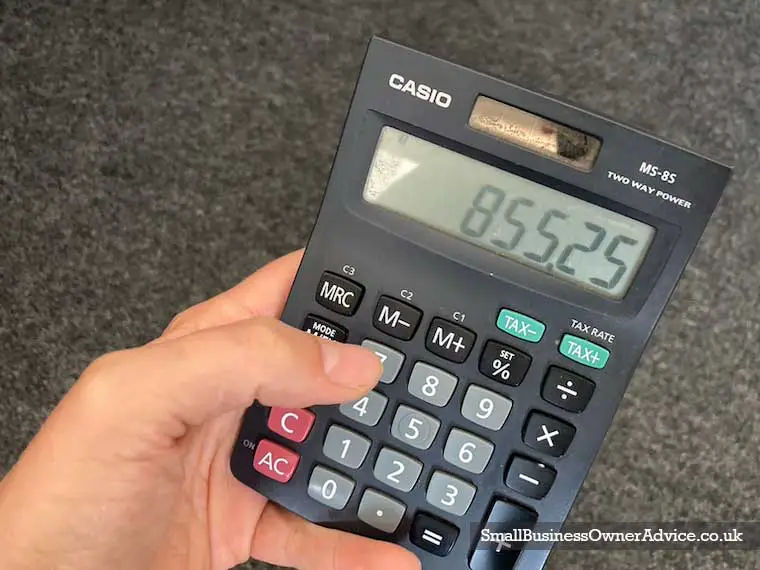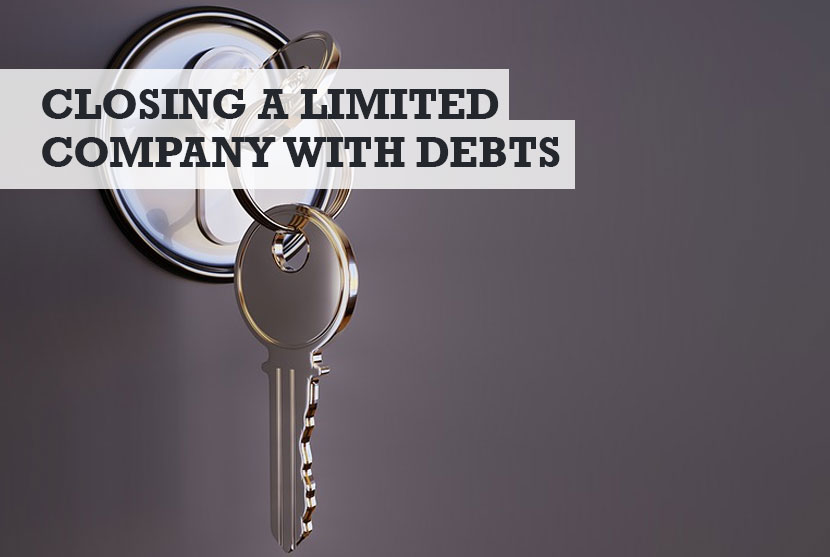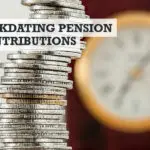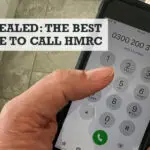Running a small business sometimes doesn’t go to plan and debts can build up. If you can’t pay those debts, you could be in a situation where you need to close your limited company down… and this can be costly.
Decisions will need to be made and the correct steps followed in a sequence to do this correctly. Closing a limited company with debts to HMRC and suppliers means you will also have certain legal obligations.
When there’s a lack of money in the business you will be rightly worried about compounding the problem with further costs. Our guide below explains how to dissolve a company with debts.
Can you close a limited company with debt? You can close a limited company with debts, but you will usually need to have the agreement of your company’s directors, shareholders, and creditors to dissolve the business. Once the company is insolvent, the interests of your creditors legally come before those of directors or shareholders.
We would recommend that you seek professional advice from an insolvency practitioner if you are considering closing a limited company with debts.
Closing a limited company with debts
When closing a business there are multiple steps that need to be followed to avoid the closure being more painful and costly than needs to be.
The individual circumstances around your situation will determine what is right for you and any creditors of the business. This will also drive what the legal requirements are to close your limited company with VAT debt, tax debt, or any form of money owing to suppliers and HMRC.
When the company is insolvent, the interests of the people your limited company is in debt to (its creditors), legally comes before those of the directors or shareholders.
How to close a limited company with debts
How do I close a limited company in debt? How you close your limited company with debts depends on your circumstances. It could be forced into compulsory liquidation if you don’t pay creditors, or you can voluntarily liquidate it. How you do this is explained below.
Firstly, if you haven’t paid debts to the creditors, the limited company can be put into compulsory liquidation. You could avoid this though by applying for a Company Voluntary Arrangement.
Arrange liquidation with your creditors
The other option for closing a limited company with debts is a Creditors Voluntary Liquidation (CVL).
A director can propose a company stops trading and be liquidated (‘wound up’) if:
- The company cannot pay its debts (it’s ‘insolvent’).
- Enough shareholders agree.
You must call a meeting of shareholders and ask them to vote. 75% (by value of shares) of shareholders must agree to the winding-up to pass a ‘winding-up resolution’.

Once the resolution is made there are 3 steps you must follow when closing a limited company with debts.
- Appoint an authorised insolvency practitioner as liquidator to take charge of liquidating the company. You can find an insolvency practitioner online.
- Send the resolution to Companies House within 15 days.
- Advertise the resolution in The Gazette within 14 days.
Your responsibilities as a director will change.
Apply directly to the court
A director can ask a court to order the company to stop trading and be liquidated (‘wound up’). This is known as ‘compulsory liquidation’.
You need to show the court that:
- The company cannot pay its debts of £750 or more.
- 75% (by value of shares) of shareholders agree that the court can wind up the company.
It costs:
- £1,600 to submit the petition.
- £280 for the court hearing.
Doing it this way may the cheapest way you can dissolve a company with debts, but if you can’t afford running the risk of not doing this correctly, we would advise using an insolvency practitioner.
This may be one of the most stressful periods of your life. Do you want to compound that by trying to learn the nuances of liquidating a company that has debts to HMRC, VAT, and creditors?
There are several things to consider, all of which we’ve outlined for you below to help you stay compliant and ask the right questions.
Steps in closing a limited company
The legal term for closing down a company is “dissolution” or “striking off”. By doing this, the company ceases to exist, and you will not need to send Companies House any further information, for example, your annual accounts and confirmation statement.
For a voluntary dissolution to begin, the company must meet certain conditions. You can apply to strike off your company, but only if it:
- Has not traded or changed names in the last 3 months.
- Is not threatened with liquidation.
- Has no agreements with creditors, such as a Company Voluntary Arrangement (CVA).
If your company does not meet these conditions, you’ll have to voluntarily liquidate your company instead.
You must announce your plans to all interested parties and HM Revenue and Customs (HMRC). Employees (if any) must be treated according to the company rules, business assets disposed of, and accounts emptied.
If you do not do this, any assets of a dissolved company will be become property of the Crown because it does not have a legal owner.
The company’s bank account will be frozen from the date of dissolution. Any credit balance in the account and other assets will pass to the Crown – you’ll have to restore the company to get anything back.
If your company has traded, but meets the conditions, you must send your final statutory accounts and a Company Tax Return to HMRC, stating that these are the final trading accounts and that the company will soon be dissolved.
You do not have to file final accounts with Companies House.
When Companies House receive your application, they will confirm that it has been completed correctly and publish it in the Gazette.
If there are no objections to strike off, the company will be struck off the register once the 2 months mentioned in the notice has passed. A second notice will be published in the Gazette, which means the company will not legally exist anymore (it will have been ‘dissolved’).
If you owe late filing penalties to Companies House, they will usually accept the dissolution and allow the company to close without paying the fine.
The cheapest way to close a limited company
The cheapest way to close a limited company is to submit a ‘Strike off a company from the register (DS01)’ form to Companies House. This is called a voluntary strike-off and is only available to limited companies that are closing with no debts.
You can only strike off your company if it:
- Has not traded or sold off any stock in the last 3 months
- Has not changed names in the last 3 months
- Is not threatened with liquidation
- Has no agreements with creditors, for example, a Company Voluntary Arrangement (CVA)
Use this service to apply to strike off a company from the Companies House register. It costs £8 to apply online, or £10 for a paper application.
Please note that on dissolution any remaining assets, property and rights will be passed to the Crown.
If a strike-off is not an option and the company is solvent, then a member’s voluntary liquidation (MVL) would be the next cheapest option.
The costs of an MVL are wholly dependent upon a company’s specific circumstances and the work required to be done. You will find a fixed price MVL from only £850.
If the company has debts and neither option above works for you then you can apply direct to the court by filling in a ‘winding-up petition’ form. It costs £1,600 to submit the petition and £280 for the court hearing.
Closing a limited company with bounce back loan
You can only dissolve a business if it is solvent. If you cannot repay your bounce back loan and other debts, then it is likely you have more serious financial problems, and so the only route to company closure is through a formal liquidation.
The Insolvency Service has been given more powers to clamp down on Bounce Back Loan misuse with the power to ban offenders from being a company director for at least 15 years.
How close a limited company with a bounce back loan? Some directors think they can simply dissolve a company with a bounce back loan. Striking a limited company off the Companies House register is sometimes attempted as a shortcut, but a limited company with debts needs to be properly liquidated.
Striking off a company will not somehow magically slip under HMRC’s radar and disappear.
A Bounce Back Loan is an unsecured loan, which means the lender was not required to ask the borrower for security, such as their home or another asset. This means that in many cases, if your business is closed and even after the sale of assets there is little left over for the unsecured creditor, then the loan, along with other unsecured debts will be written off.
No matter how tempting, our best recommendation is that you liquidate the company with the help of an insolvency practitioner. This way you can close the company properly.
Closing a limited company with debts to HMRC
As we have mentioned there are various tasks that require to be carried out when closing a limited company with debts to HMRC. If you do not follow the correct process, then it might stop the process altogether.
It is vital to inform HMRC of a closing company. If you do not inform HMRC that you are closing a company, they will expect you to file tax returns and other regulatory returns, which in turn could lead to an investigation of your tax affairs.
HMRC can also object the request to close a limited company at Companies House which can stop the strike off.
It makes sense to inform HMRC of your intention to close a company to avoid potential fines, penalties, disputes and for the process to go as quickly and smoothly as possible.
There are various departments spanning HMRC and who you need to contact will depend on the taxes you are registered.
- Cancelling your VAT registration.
- Cancelling your PAYE registration.
- Cancelling your CIS registration.
- Cancelling your self-employment.
Closing a limited company with debts to HMRC is going to be tricky as you cannot dissolve a company with debts. You can only dissolve a business if it is solvent. If you cannot repay your HMRC debt the only route to company closure is through a formal liquidation.
Closing a limited company with VAT debt
If you attempt to strike off and close a limited company with VAT debt HMRC will reject the application when it is advertised in the Gazette.
If you have VAT debt and you have not been in contact with HMRC to resolve the matter it is highly unlikely they will allow the limited company to be struck off and will continue to chase for the outstanding VAT debt.
If the VAT debt is beyond the capabilities of the business to pay then you may need to speak to an Insolvency Practitioner to see if placing the company into voluntary liquidation, known as creditors’ voluntary liquidation (CVL), it is the best way forward.
A creditor such as HMRC will take legal proceedings to have a company wound up, known as a compulsory liquidation when a company fails to pay outstanding taxes and is unable to reach an agreement.
Closing a limited company with no debts
So, we have been through the various scenarios looking at how you can close a limited company with debt. Now we are going to focus on those occasions where you wish to close a limited company that does not have debt.
A limited company can generally be removed from the registrar of companies at Companies House in one of two ways:
Voluntary strike off and dissolution
You can close down your limited company by getting it ‘struck off’ the Companies Register. This is also known as ‘dissolving’ your company.
You can only strike off your company if it:
- Has not traded or sold off any stock in the last 3 months.
- Has not changed names in the last 3 months.
- Is not threatened with liquidation.
- Has no agreements with creditors, for example a Company Voluntary Arrangement (CVA).
Members voluntary liquidation (MVL)
You may choose members’ voluntary liquidation if your company is ‘solvent’ (can pay its debts) and one of the following applies:
- You want to retire.
- You want to step down from the family business and nobody else wants to run it.
- You do not want to run the business any more.
To pass a resolution for members’ voluntary liquidation, you must:
- Make a ‘Declaration of solvency’ – English and Welsh companies.
- Ask the Accountant in Bankruptcy for form 4.25 (Scot) – Scottish companies.
You’ll need to review the company’s assets and liabilities just before making the declaration.
Make a declaration of solvency
Write a statement saying that the directors have assessed the company and believe it can pay its debts, with interest at the official rate. You should also include:
- The name and address of the company.
- The names and addresses of the company’s directors.
- How long it will take the company to pay its debts – this must be no longer than 12 months from when the company’s liquidated.
You also need to include the statement of the company’s assets and liabilities.
After you have signed the declaration or form
There are 5 further steps to members’ voluntary liquidation.
- Sign the declaration or form 4.25 (Scot) – it must be signed by the majority of directors in front of a solicitor or ‘notary public’.
- Call a general meeting with shareholders no more than 5 weeks later and pass a resolution for voluntary winding up.
- At the meeting appoint an authorised insolvency practitioner as a liquidator who will take charge of winding up the company. You can find an insolvency practitioner online.
- Advertise the resolution in The Gazette within 14 days.
- Send your signed declaration to Companies House or form 4.25 (Scot) to the Accountant in Bankruptcy (for Scottish companies) within 15 days of passing the resolution.
When the liquidator is appointed, they take control of the company. Your responsibilities as a director will change.
How much does it cost to close a limited company?
How much it costs to close a limited company is wholly dependent upon a company’s specific circumstances and the work required to be done. As we have identified in this guide there are fundamentally three ways to close a limited company.
- Strike off (from £8).
- Members voluntary liquidation (MVL) (from £850).
- Compulsory liquidation (from £1,880).
- Creditors voluntary liquidation (CVL) (from £4,800).
They all come with their own rules and costs. The rules determine which option is available and ultimately the level of work and thus the cost to close a limited company.
We have outlined the rules for each of these options above so you can see which is applicable to your situation to get a rough guide of the price but as we have stated it is wholly dependent on your specific circumstances.
FAQs on closing limited companies with debts owing
What happens if you close a limited company with debt?
If you attempt to close a limited company with debt, the creditors of the company can apply for its reinstatement. It’s likely you will not get to that stage, as a notice will be placed in the Gazette and creditors could see that you were trying to close the company.
At that stage, they can request the process to be stopped.
If you are successful in striking off a company with outstanding debts, it is highly likely that one of the company’s creditors will apply for its reinstatement.
Can directors be personally liable for limited company debts?
In general, the limited company structure protects directors from personal liability in relation to business debts. However, if a company is insolvent and the directors take action or omit taking action which worsens the creditor’s position then they could be liable for debts arising from that point.
The specific transactions that will be of interest to the liquidator in determining liability that can have a direct financial consequence for the Directors:
- Directors Loan Accounts.
- Undervalued Transactions.
- Preferential Payments.
- Unlawful Dividend Payments.
- Personal Guarantees.
- Fraud and misrepresentation.
- Inaccurate record keeping.
Section 214 of the Insolvency Act refers to ‘wrongful trading’ — the term used to describe scenarios where a company director fails to put the interests of creditors first while knowing the business was insolvent.
Wrongful trading does not necessarily reflect a conscious desire to defraud creditors; it can occur due to a misunderstanding or lack of awareness about the correct procedures to follow.
If a limited company is in financial trouble or becomes insolvent and goes into liquidation, its directors have a legal duty to protect creditor interests.
Failure to do so can expose the directors to personal liability for the company’s debts.
You may wish to read our guide on what your responsibilities are as a director of a limited company for more information.
Can I sell my limited company with debt?
Yes, you can sell your limited company with debt. A business with substantial debt is likely to command a much lower price than one without debt.
If your business is experiencing financial distress or is already insolvent, you may believe there is no hope of selling it. Insolvent and distressed businesses are commonly purchased, however, by various parties including turnaround specialists and entrepreneurs searching particularly for struggling businesses.
When selling a limited company with debt, you will be required to sign a sale agreement with warranties to the purchaser. These warranties are there to protect the purchaser so there may be clauses entered in relation to company debts that you should be aware of.
What if the debt has a personal guarantee?
It is highly unlikely that the obligations under a personal guarantee will be freely transferable by the guarantor.
If a guarantor wishes to be released from his guarantee, then he will have to seek the consent of the lender and may have to find a replacement guarantor satisfactory to the lender before being released.
Can I dissolve a company with debts?
You cannot dissolve a company if it has significant debts.
You can only dissolve (Strike Off) a limited company if the following applies:
- The company has not traded for three months; this must be a genuine cessation of trade
- The company has no assets, property or cash at the bank.
- The creditors are informed, requesting their permission for the company dissolution.
- Creditors are given three months to consider the request to dissolve the company and can reject such a request.
- The company has not changed its name in this period.
- The company has not disposed of any property or assets (this may include land and buildings, plant and equipment, debtors and other assets).
If the above does not, then you cannot dissolve a company with debts and will need to go through a proper liquidation process.
How much tax do I pay if I close my limited company?
When closing a limited company, you will need to prepare a final set of accounts so you can create your final corporation tax return. If you wish to close your limited company, you will need to settle the outstanding corporation tax with HMRC before writing to them to inform them that you wish to close down the company.
If you have an outstanding corporation tax return and payment due, you will not be able to close your company with Companies House. HMRC will object to the application as they are a creditor of your business.
Handy Hint: Here are some creative and legal ways to help you reduce your corporation tax.
Conclusion
Closing a business is a lot harder than starting a business, both from an emotional and practical point of view. Once you have made the difficult decision to close your business you will probably want the experience to be over as quickly as possible with the minimum of fuss and pain.
Ultimately you can try to navigate your way through this on your own but as we have highlighted above there are many steps and considerations to make.
You will probably have enough on your plate so whilst you can close down your business without the help of an insolvency practitioner, we would ask you to think about the financial and emotional consequences of doing so.
An insolvency practitioner will use their experience of having been through this process many times before. They are detached from the situation emotionally so will help you make rational decisions. Getting the steps wrong can take more time and cost more money.
They will help you navigate this process to complete it as efficiently as possible. There is a financial cost to this service but there is also a cost to you of trying to go it alone.
You might also like…
Image in header via https://pixabay.com/illustrations/key-castle-security-metal-3d-3348307/

Jon has been in business since 1999, and in that time worked with more than 300 small business clients. As well as being an accountant, he is also an early adopter of tech, and has helped small businesses to leverage the power of their computer systems by creating software to automate and simplify accounting tasks.






